For our excitement, we went to Essex college and watched “Jerry’s Girls”, the music of Jerry Hermon (Hello Dolly, etc.). We managed to skirt the rain all the way home.
I hope this finds everybody doing well.

For our excitement, we went to Essex college and watched “Jerry’s Girls”, the music of Jerry Hermon (Hello Dolly, etc.). We managed to skirt the rain all the way home.
I hope this finds everybody doing well.
This was a big mistake. Our vacation will be January 8 – March 1. I’ll let you know when I’ve figured out who I can blame for this mistake.
As big of a mistake as it is, it doesn’t compare to Microsoft. I was trying to get one computer with an extended warranty. There a website that shows all my devices and the associated warranties. The help desk person had a different screen with the same information (allegedly). My screen showed computer #1 had an extended warranty, the service desk showed computer #2 had an extended warranty. Which one is correct? Here’s an idea. I can live without the extended warranty! Microsoft refunded the cost of the extended warranty and I returned the second computer. At long last, an end to a month-long issue.
JAMMM stopped at our house for a couple of days on their way to San Diego. The extreme heat and the stress that comes with moving limited our activities. The big event was a couple of hours in our neighborhood kiddie pool. That wasn’t a lot, but at times it was quite intense, Fortunately, everybody made it to San Diego in good form. There are a few pics on the web.
I hope this finds everybody doing well.
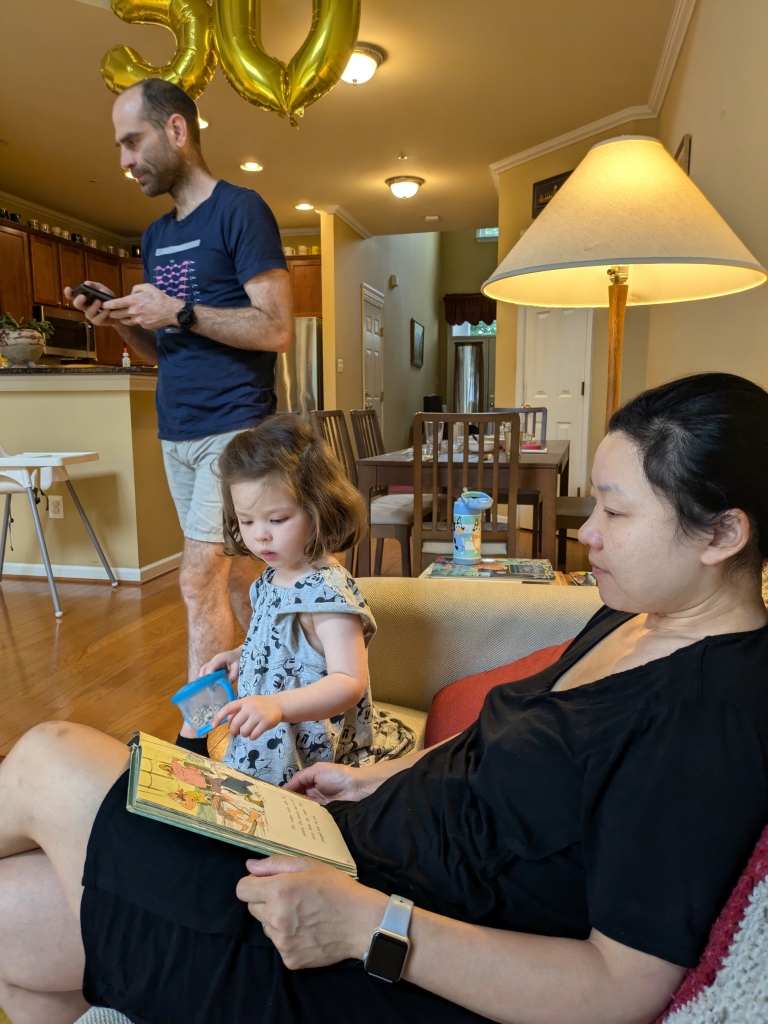

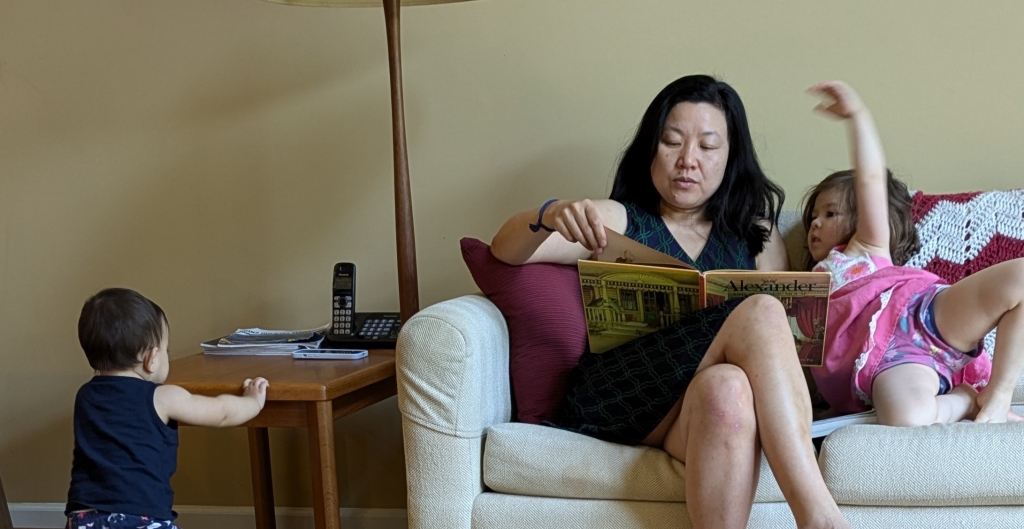
Each of our children are going through major exciting times. (It’s all good.) Well I’m here to tell you we are no slouches for excitement right here at 8800. Why just today Danita went to the pool while I was on a bike ride. Add in neighborhood parties and food truck dinners with our neighbors and it’s easy to see just how exciting life is here in Columbia.
For the last month, I have been working on a new computer. I ordered a Microsoft Surface Go 4th edition. It’s 10.5″ display makes it perfect for travel. Adding an external monitor offers a nice big screen when using it at home. I received the new computer a month ago. It’s working fine, but the extended warranty I purchased was not linked to the computer. After 3 phone calls, Microsoft decided to swap it out with a new computer, this time applying the warranty to the new computer. I got the new computer, but the warranty was applied to my original computer. Now I have a month-old computer with a warranty, and an RMA to replace that same computer, and a brand new computer that doesn’t have a warranty. It’s all quite confusing. I hope I can get this settled out this week.
We’re getting serious about setting up our next trip. This one will be January 8 – May 1. It will involve ships, planes, trains, and automobiles. I don’t want to give away everything just yet, but it will include some quality time with JAMM in San Diego. Woo-hoo!
I hope this finds everybody doing well.
I already wrote about JaMM’s visit and the good news about Danita’s wrist. But there was still more this week. I am retired from my retirement. I used to support our community’s IT needs and our website. Another guy took over the IT support before we went on vacation. We got another guy to volunteer to support our website. He had a lot of experience in IT, but knew nothing about websites. That’s OK. He was a quick study. I hung up my spurs at 3:30 Thursday. Now I’m not supporting anybody for anything. Hurrah!
Tonight we joined the Chaprnka’s for a concert in Catonsville. Danita made a beautiful and tasty quiche for a picnic dinner. And it looked as good as it tasted. You can see a pic on the web. I also got a snapshot of the concert. These concerts are very well attended. More than 3/4 of the audience is out of the frame.
I hope this finds everybody doing well.
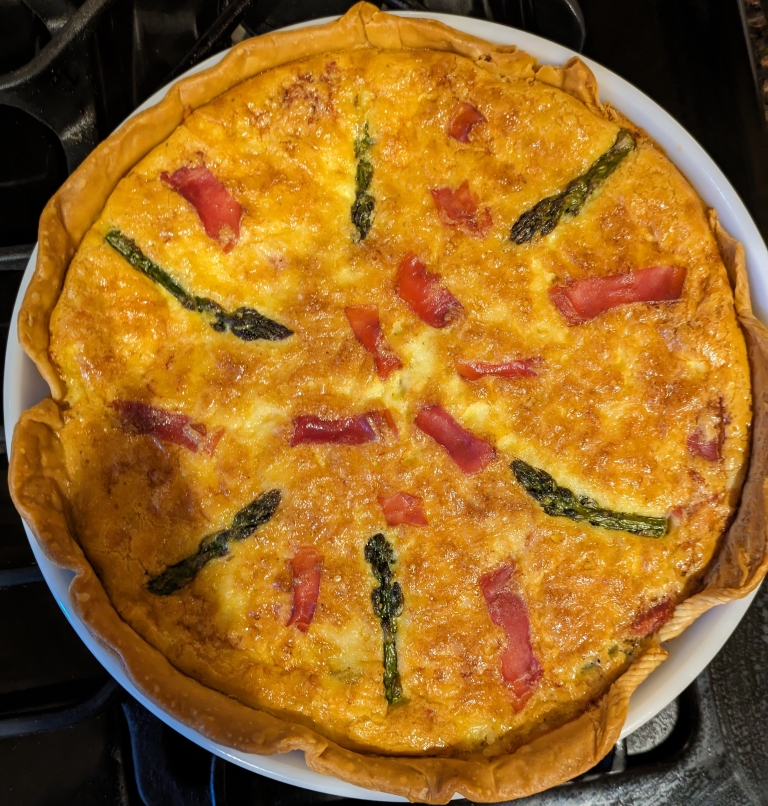

Jiajia had a conference in Baltimore. Mark and the girls joined her. We had a number of adventures. Jiajia was even able to participate with us one afternoon. The pics on the web site will give you a good idea.
The other news is that Danita was finally able to see her orthopedist. She is cleared for normal activities. Hurrah!
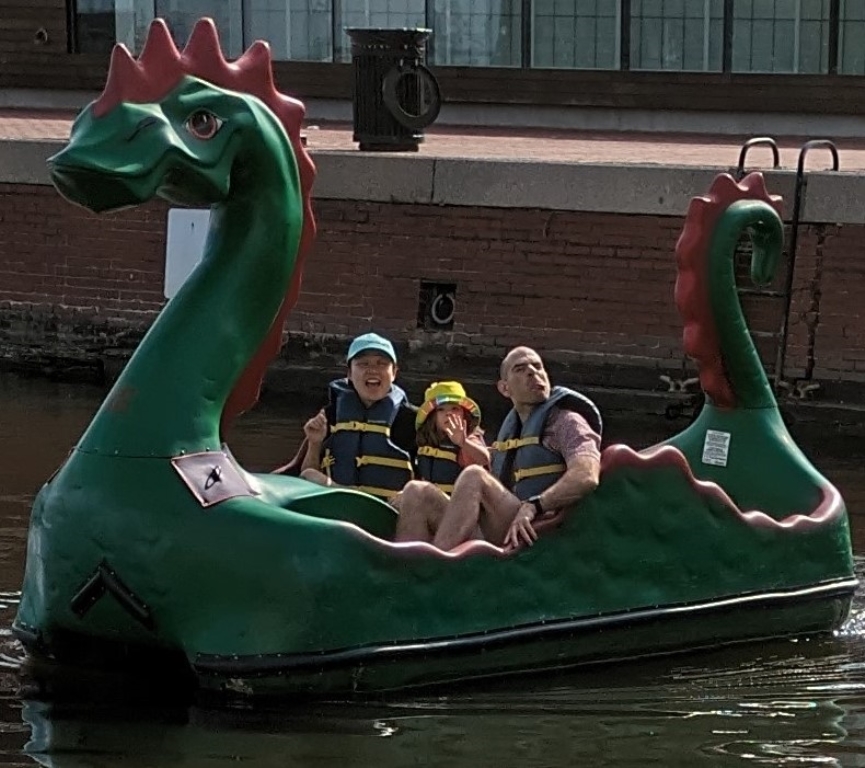
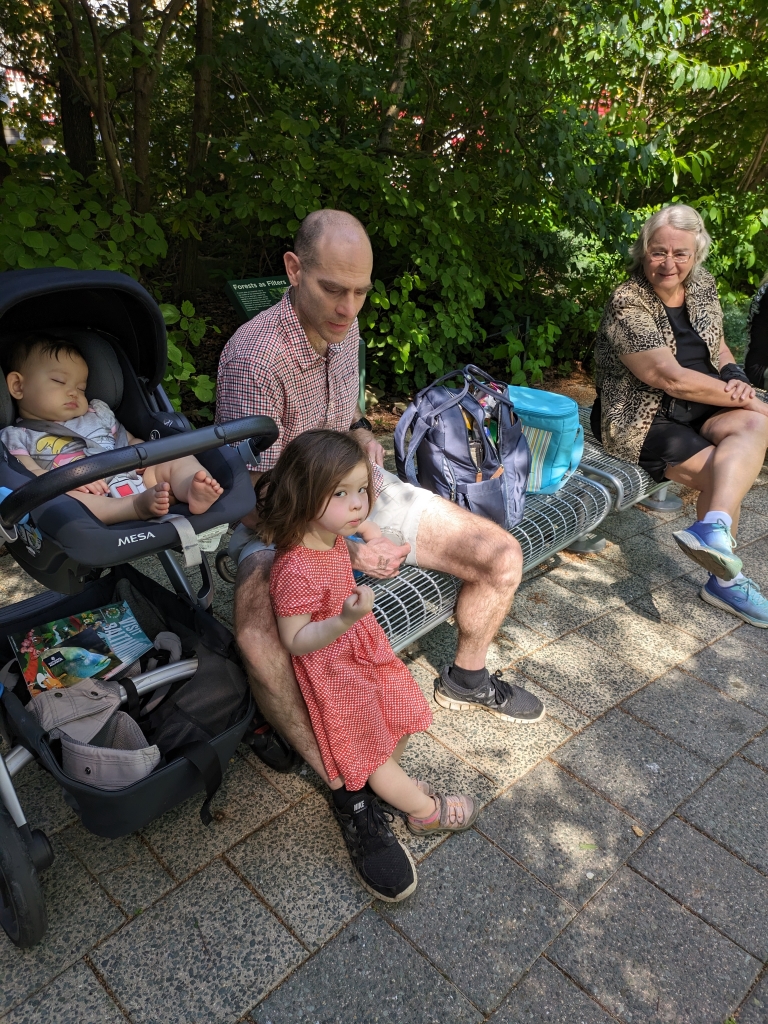
This week all the pics are in the Email.
Jul had a seminar in DC. She decided to leave a little early and pay us a visit. We watched the movie “Fall Guy” (recommended) and visited the Patuxent Wildlife Refuge. The visitor center has a wealth of information about the area, but we focused on a mile and a half walk around one of the lakes. It was a beautiful day. One if the highlights was a beaver lodge. It’s a beautiful place to visit.

Memorial Day weekend is the Parkton Cup, hosted by Ed & Lynne. This year there were more people and more babies than ever. Mira and Maia did very well with the food. But they weren’t totally sold on the pirate theme.
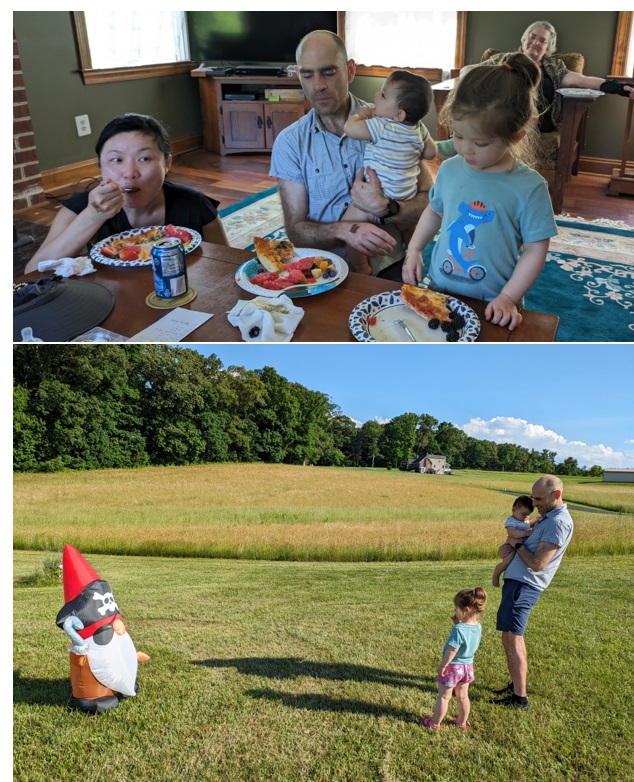
Competition was as fierce as ever. The audience awaited the winner while enjoying quiet conversations. This year, Ed won the grand prize.
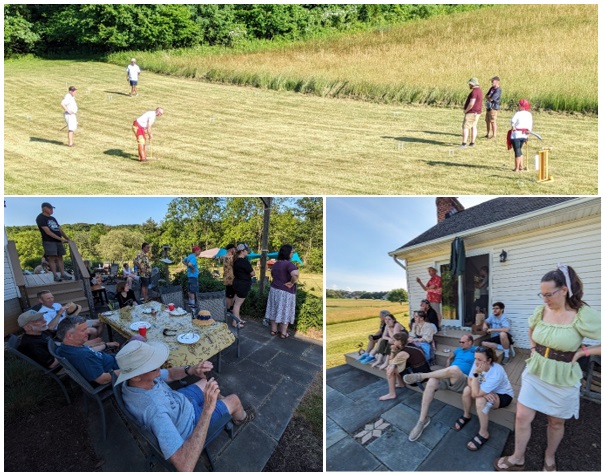
I had extremely good luck at Charlestown this week. Mom received her speech-to-text phone. I took it home to figure it out. It’s a well designed piece of equipment, but it needs access to the internet. At Charlestown, before you can add a device to the network, you have to register the device. While I was walking towards the car, I saws two guys approaching the building. The idea popped into my head that they looked like IT guys. So I asked. Indeed they were IT. I was standing there, holding the phone, in front of a couple of IT guys, so I asked them how to register the phone. Normally, IT guys won’t let this kind of information out. But good fortune shown on me. They told me exactly what to do. With a little more good luck, I will quickly get the new phone up and running when I visit Mom Tuesday morning.
As you can see, it was quite a busy week for us. I hope this finds everybody doing well.
This hasn’t been our best week. I came home from a ride while Danita was at the pool. Without thinking, I locked the garage door. When Danita came home, I was in the shower and couldn’t hear the doorbell. Danita didn’t know where the emergency key was. She spent quite a bit of time ringing the doorbell and banging on doors.
I took my bike to the bike store because the gear shifter wasn’t working properly. The store found and fixed a problem, but it turns out there was also a second problem. I tried to fix it but I only made it worse. After walking my bike home, I took it back to the store. I turned a minor problem into a multi-hundred problem.
While I was doing not good things to the bike, Danita was working in our garden. She was trying to remove a plant. The shovel slipped. She fell. Hard. She scraped her legs and bumped her head. But the real damage was her wrist. It appears her tendon in her left hand pulled some bone away. It appears that everything will heal itself eventually. Danita will call an ortho guy newt week to make sure. In the mean time, I am her … what? I can’t be a lady in waiting, because I’m not a lady. Man servant sounds better, but Danita isn’t a man. I can be her sous chef, but that is only for cooking.
Here’s a quick picture taken surreptitiously, offered without comment. I wish it had come out better, but I really didn’t want to embarrass anybody. I hope this finds everybody doing well.
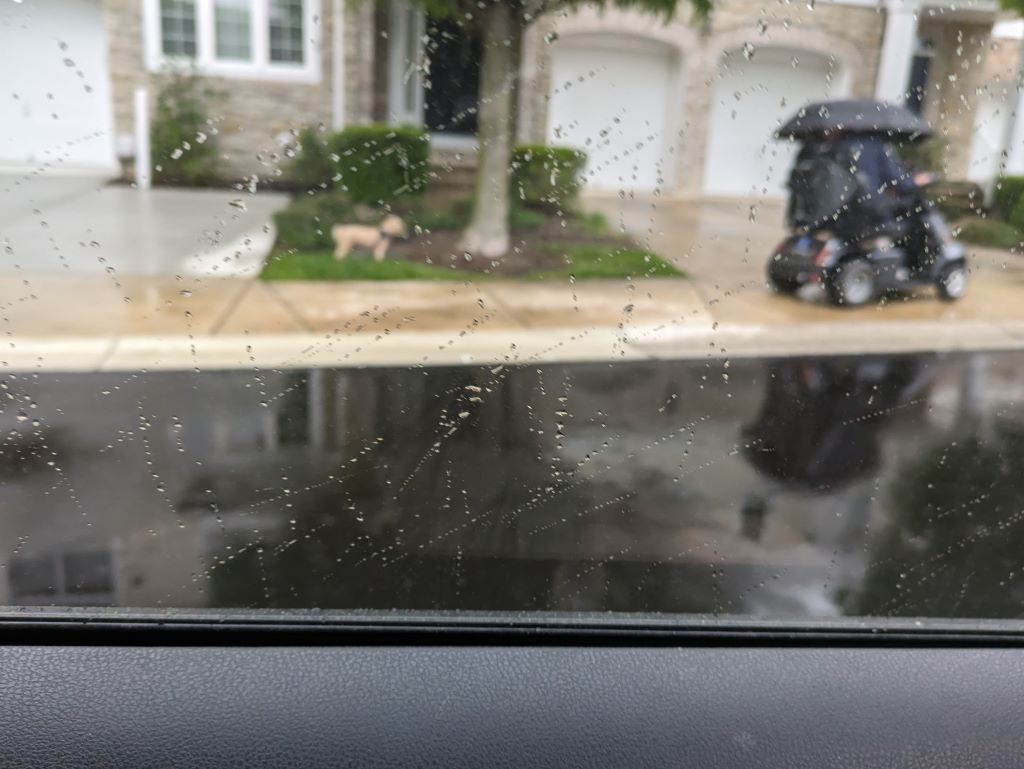
I’m not talking about the Blue Light Specials they used to have at K-Mart. I’m not talking about TV and computer “blue light” that supposedly keeps one from falling asleep. (It doesn’t ever keep me up.) I’m talking about a Blue Light medical treatment.
I went to my dermatologist. She I have a lot of small skin cancers on my face, and I should get a Blue Light treatment ASAP. I scheduled it for first thing Friday morning. They put a medicine on my face and let it set for an hour. Then they give me special goggles to protect my eyes and roll up a huge curved UV lamp that wraps from one ear to the other. When they turn it on, you feel painful prickles. It continues for 15 minutes. After that, you have to avoid sunlight, because the UV will activate the chemical again and you can get a very painful sunburn. It was my third treatment, so I knew what to expect. That didn’t make it any easier.
After I got the treatment, I realized we have Grill and Chill Friday evening. I couldn’t miss that! I started with SPF 100 sunblock. I put on my balaclava (which I use to cover my face when riding in the winter) and scrunched it up to cover everything buy my eyes. I topped it off with a pair of sun glasses. Danita said I looked like I planned to rob a bank. It was 6:00 on a rainy cool day, and it worked just fine. We had a great time talking with neighbors and eating hamburgers.
Today we had a brunch event at the Baltimore Museum of Art. I couldn’t miss that either. My bank robber outfit did fine going to the BMA early in the morning. (With Danita driving, naturally.) We enjoyed the brunch. But coming home the sun was out and was extremely bright. I had my rain coat with me. I put it over my body backwards and used the hood to cover my face and to provide another barrier to the light. That almost worked fine. When it was time to come home, I was touching up my sun block and got it too close to my eye. It didn’t bother me going home, but after I got home my eye started stinging. A full shower and a cold compress helped, but it looks like I’ll be using Kleenex most of the day.
Insult to injury: the medical technician told me she was making up a goody bag for me. I told her I liked dark chocolate and red wine. She gave me skin creams and sun block. I didn’t get even a lollypop.
I hope this finds everybody doing well.
Stay with me on this story. I will circle back. I use my phone as my GPS when I’m on the bike. My phone is a 2 years old Google Pixel 5a. The battery was not lasting as long as my ride. I was eligible for an upgrade, so I took it. The new phone (a Pixel 7a) came in today. Google did a fantastic job of making it easy to switch phones. Every thing was up and running in less than half an hour. One of the nicest features is that I can stream audio from the phone directly to my hearing aids. Way cool.
We took Mom out for a belated birthday treat. We started out with a fabulous concert at the Charlestown chapel. We heard an 11-peson brass group called the “Barclay Brass”. What a great concert. The group is composed of very good brass players, mostly retired from an armed forces band. The chapel’s acoustics did a great job of making an excellent group sound even better.
Just before the concert started, they asked that everybody turn their phones off — not quiet mode, off. I punched the “off” button. My phone did not turn off. I tried push and hold. No joy. I tried double-pressing. The phone changed to camera mode. The concert was starting. The only thing I could do was to put the phone away. During intermission, I connected to the guest WiFi and looked up how to turn off the phone. When I want to turn thge phone off, I now have to press two keys at the same time. How embarrassing. With the phone safely off, I enjoyed the second half of the concert even more than the first.
I didn’t get caught. We had a great time. After the concert, we went to Catonsville Gourmet restaurant for a very nice dinner. There’s no need to switch to the website. I managed a quick snap of most of the group. It’s right here.
I hope this finds everyone doing well.

We gave ourselves a wonderful cruise for our 50th anniversary. But the kinds decided that wasn’t enough. They organized a wonderful party. Festivities started Thursday when JaMM came for a visit.

The party was Saturday. Great parties begin with great food. We had all we wanted.
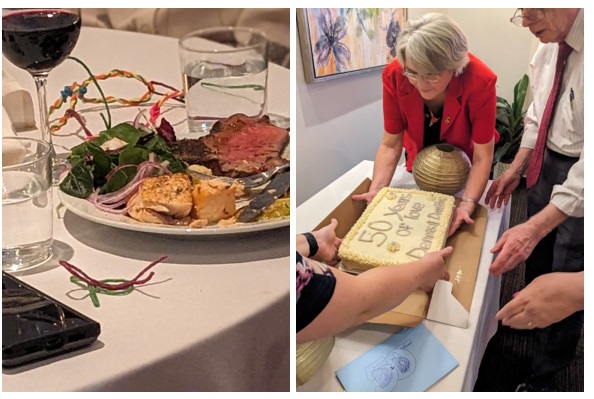
We old folks party in our particular way. Bryon volunteered to take snaps, he and Elizabeth aren’t in any of them.
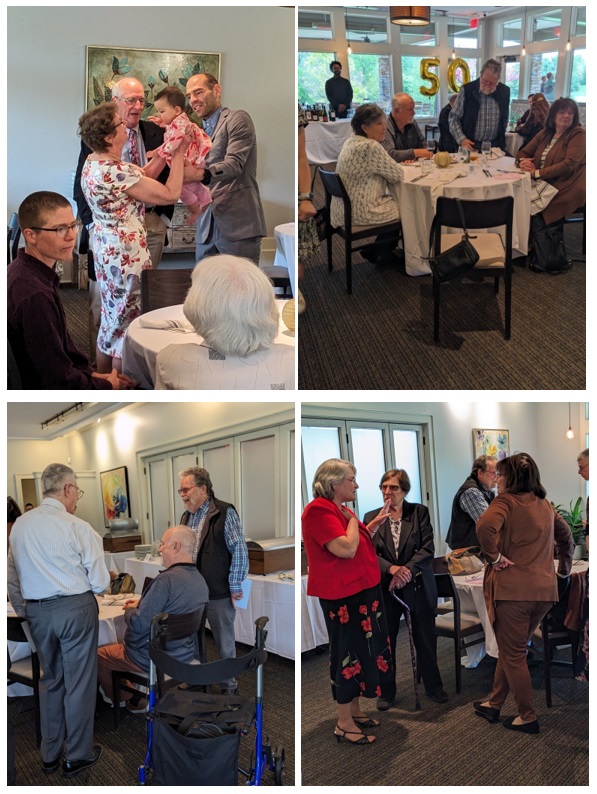
It wouldn’t be a party without a little silliness. (Mark is wearing Wiki stick glasses).
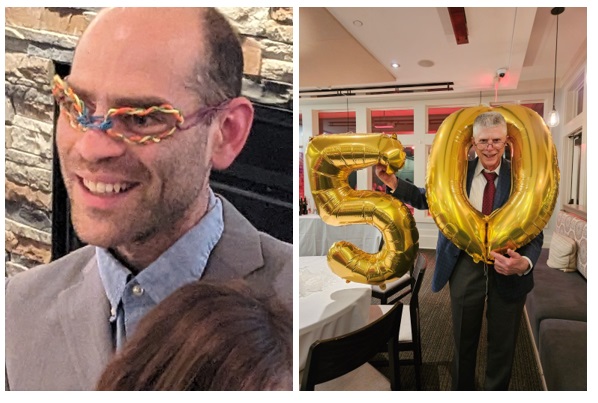
A great time was had by all. We all enjoyed catching up with each other.
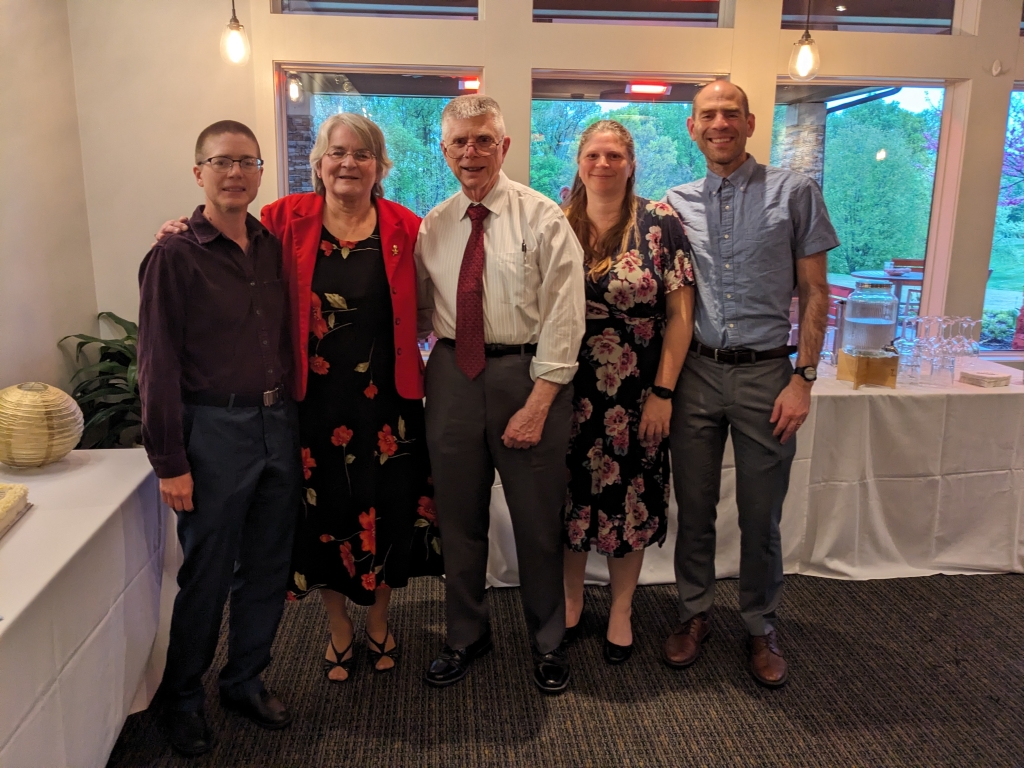
I hope this finds everybody doing well.